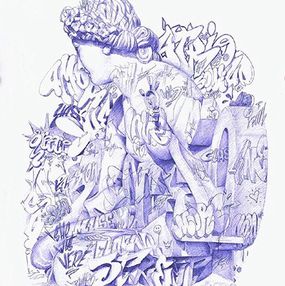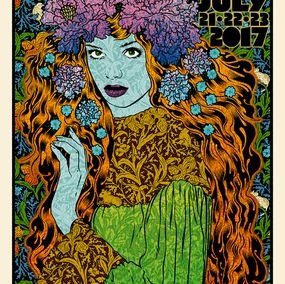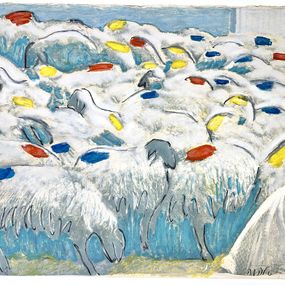
Screen Print for Sale
Screen printing is one of the oldest printing techniques traditionally done on silk. The practice dates back to the Song dynasty in China, in 1000 BC. The method consists of printing a pattern using a fabric stencil. The drawing is first done on paper, then the shape is cut out and applied to the final support on which the artist paints, leaving the ink only inside the shape. Printing may be done on paper, but also on textiles, cardboard and metal… When a subject drawn on stone is printed, it is then known as a lithograph.
Screen printing was not exported to the West until the beginning of the 20th century, when Chinese emigration to the United States was at its peak. This technique was met with immediate success when it appeared in the United States, and was used by the printing industry, businesses and artists.
In 1930, a group of American artists began to use the term "serigraphy" to designate works that had no commercial purpose. It subsequently reached Europe during WWII, when Americans used it to leave create signage and mark their vehicles.
As its popularity spread beyond artistic circles, screen printing underwent new developments: silk was gradually replaced by nylon, a material that was easier to obtain; The roller - used to spread the ink - was replaced by the scraper, and UV ink, which provides greater precision, made an appearance. As screen printing was particularly suitable for industrial production, publicity or printed textile production, it is not surprising that the Pop Art artists made use of this technique, which also allowed them to make use of very opaque and vivid colors. Andy Warhol, in particular, used it for his famous Marilyn Monroe portraits.
In Europe, screen printing was used by modern artists such as Henri Matisse in his work “Composition sur fond bleu". The technique was also widespread during May 1968 as it was used for making posters. Its use increased during the 20th and 21st centuries and it continues to be used for protest or for spreading a political message as shown in certain works of street art. Shepard Fairey, for example, used the technique when creating his poster “Hope", which represents Barack Obama.
Today, screen printing is used in a variety of ways: textile screen printing, industrial screen printing, digital screen printing, all for small or large format printing. With screen printing, we create business cards, t-shirts, stickers and advertising objects of all kinds and on all media, as works of graphic art. This versatility is explained by the fact that a screen printer can print on almost any material, wood, plastic, metal, glass, cardboard, textile.
On Artsper, you will find silk-screen prints of the greatest masters such as Victor Vasarely and Keith Haring, but also those of the street artist JonOne, the abstract prints of Sonia Delaunay, the colorful silk-screen prints of Kiki Kogelnik, the hypnotic compositions of François Morellet, the pop patterns of Takashi Murakami and many others...
Save your search and find it in your favorites
Save your search to find it quickly
Saved search
Your search is accessible from the favorites tab > My favorite searches
Unsaved search
A problem occurred




Black Heart (Party At The Moontower)
Shepard Fairey (Obey)
Print - 30 x 30 x 1 cm Print - 11.8 x 11.8 x 0.4 inch
$289
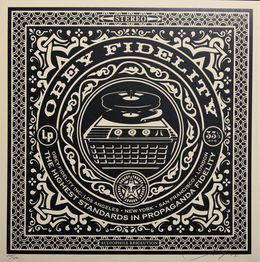
Audiophile (Party At The Moontower)
Shepard Fairey (Obey)
Print - 30 x 30 x 1 cm Print - 11.8 x 11.8 x 0.4 inch
$231
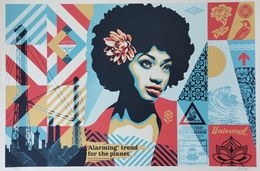
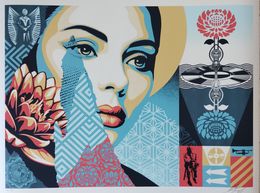
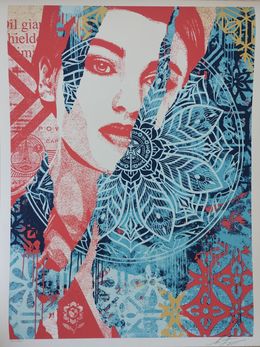
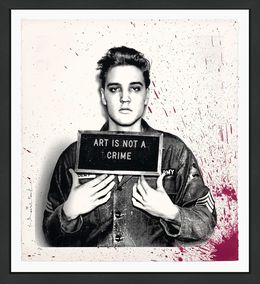
Happy Birthday Elvis! - Jailhouse Pop (framed hand finished screen print)
Mr Brainwash
Print - 61 x 55.9 x 0.3 cm Print - 24 x 22 x 0.1 inch
$3,950
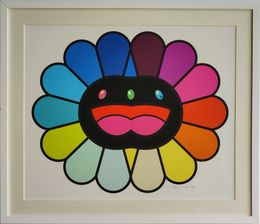
Multicolor Double Face: Black
Takashi Murakami
Print - 50 x 60 x 0.1 cm Print - 19.7 x 23.6 x 0 inch
$3,005
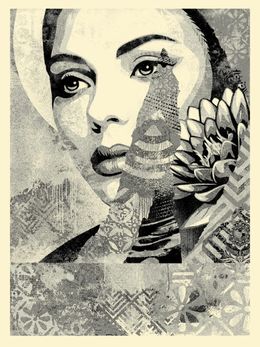
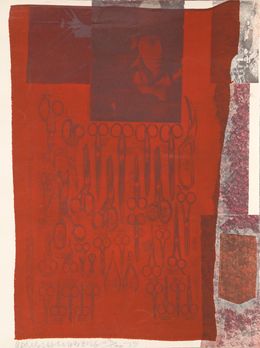
The Most Distant Visible Part of the Sea
Robert Rauschenberg
Print - 77.5 x 58.4 x 0.5 cm Print - 30.5 x 23 x 0.2 inch
$4,500
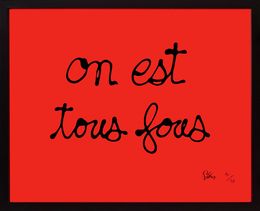

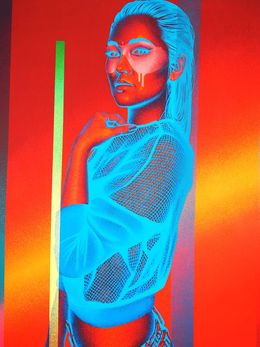

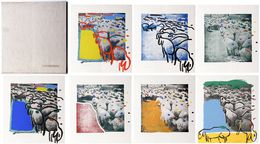

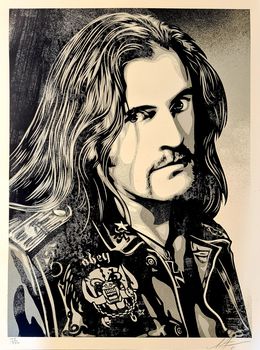
Lemmy Damaged Case (Motörhead)
Shepard Fairey (Obey)
Print - 61 x 46 x 0.2 cm Print - 24 x 18.1 x 0.1 inch
$555
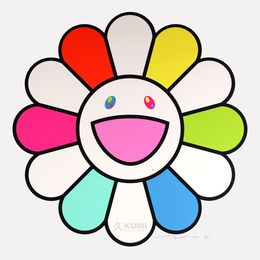


Blood & Oil Mandala (Blood Drop)
Shepard Fairey (Obey)
Print - 61 x 46 cm Print - 24 x 18.1 inch
$462

Psychedelic Garage (Dance Floor Riot)
Shepard Fairey (Obey)
Print - 30 x 30 x 1 cm Print - 11.8 x 11.8 x 0.4 inch
$347

Perfect Kiss (Dance Floor Riot)
Shepard Fairey (Obey)
Print - 30 x 30 x 1 cm Print - 11.8 x 11.8 x 0.4 inch
$347

New Wave Girl (Dance Floor Riot)
Shepard Fairey (Obey)
Print - 30 x 30 x 1 cm Print - 11.8 x 11.8 x 0.4 inch
$289
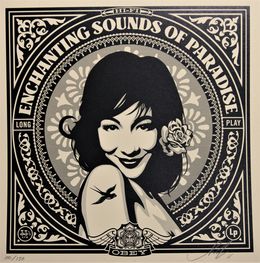
Enchanting Sounds (Dance Floor Riot)
Shepard Fairey (Obey)
Print - 30 x 30 x 1 cm Print - 11.8 x 11.8 x 0.4 inch
$405

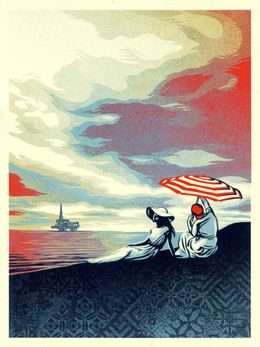

Stairway to London (Zepplin)
Mr Brainwash
Print - 55.88 x 76.2 x 1 cm Print - 22 x 30 x 0.4 inch
$3,000 $2,700
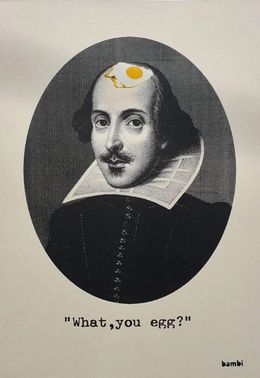
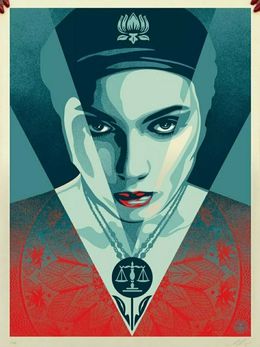

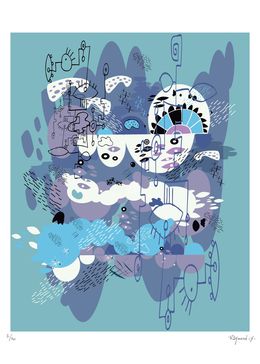
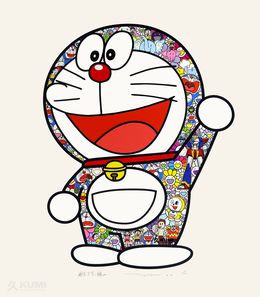
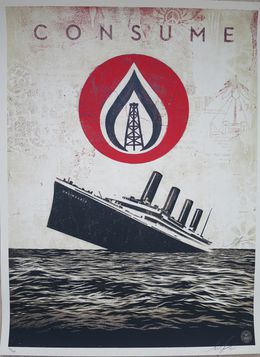
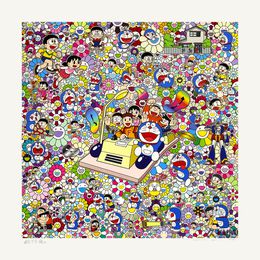
On an Endless Journey on a Time Machine with the Author Fujiko F. Fujio!
Takashi Murakami
Print - 60 x 60 cm Print - 23.6 x 23.6 inch
$5,834



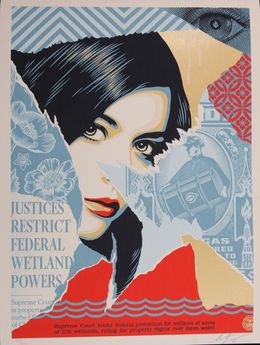

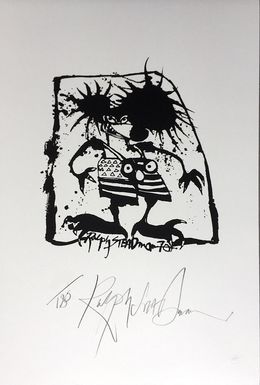







Panda Cubs are Cuddling Yay!
Takashi Murakami
Print - 51.25 x 51.25 cm Print - 20.2 x 20.2 inch
$5,422
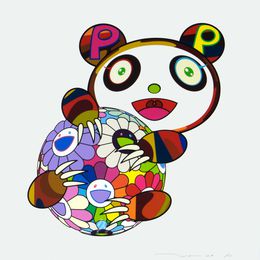
A Panda Cub Hugging a Ball of Flowers
Takashi Murakami
Print - 50 x 50 cm Print - 19.7 x 19.7 inch
$4,461




Underworld Revolution (Party At The Moontower)
Shepard Fairey (Obey)
Print - 30 x 30 x 1 cm Print - 11.8 x 11.8 x 0.4 inch
$462
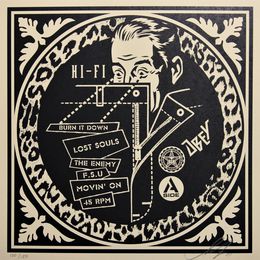
Hi Fi (Dance Floor Riot)
Shepard Fairey (Obey)
Print - 30 x 30 x 1 cm Print - 11.8 x 11.8 x 0.4 inch
$208
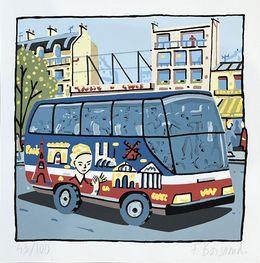
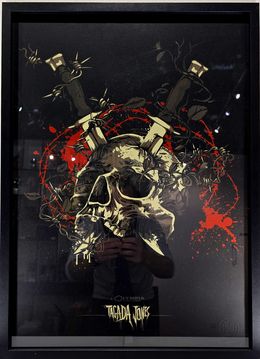
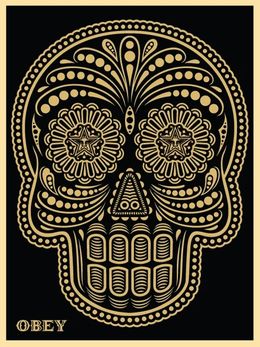
Day of The Dead (collaboration with Ernesto Yerena)
Shepard Fairey (Obey)
Print - 102 x 77 x 1 cm Print - 40.2 x 30.3 x 0.4 inch
$3,410
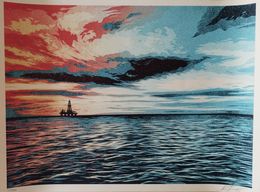
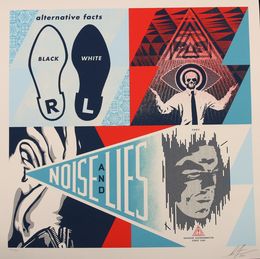

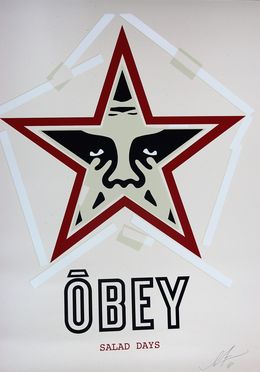

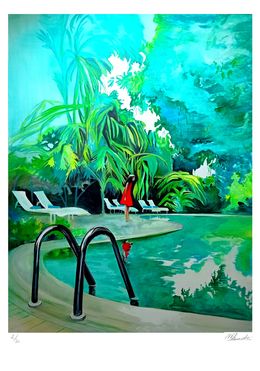
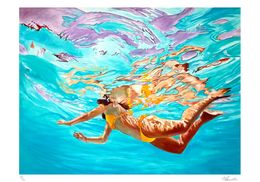
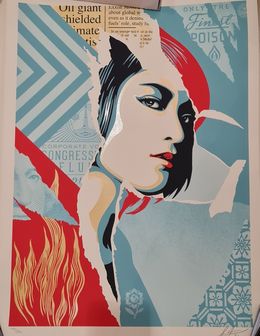

Just Future Rising II
Shepard Fairey (Obey)
Print - 61 x 46 x 0.1 cm Print - 24 x 18.1 x 0 inch
$347
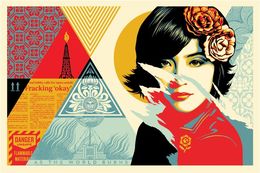
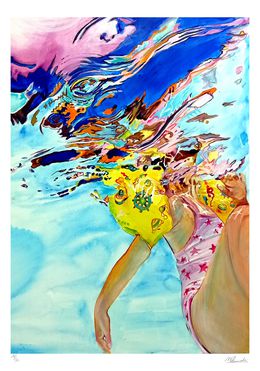




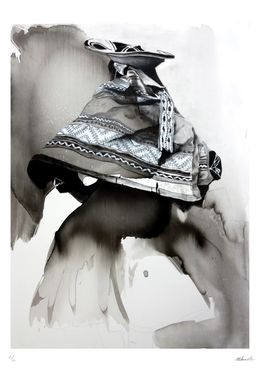


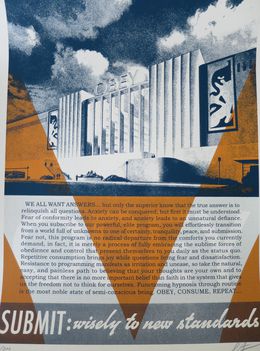
Obey Conformity Factory (Orange)
Shepard Fairey (Obey)
Print - 61 x 46 cm Print - 24 x 18.1 inch
$405

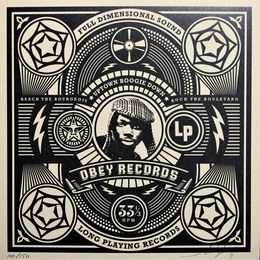
Boogie Down (Dance Floor Riot)
Shepard Fairey (Obey)
Print - 30 x 30 x 1 cm Print - 11.8 x 11.8 x 0.4 inch
$208

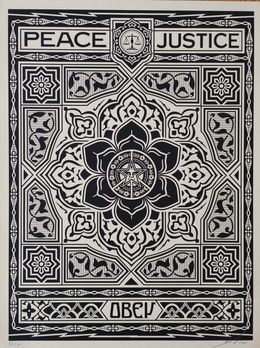
Obey Peace and Justice Ornament Black
Shepard Fairey (Obey)
Print - 61 x 46 x 0.1 cm Print - 24 x 18.1 x 0 inch
$520
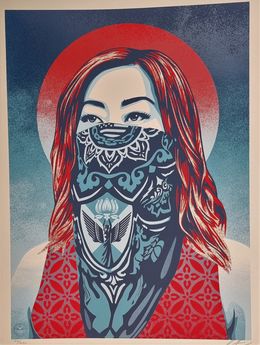


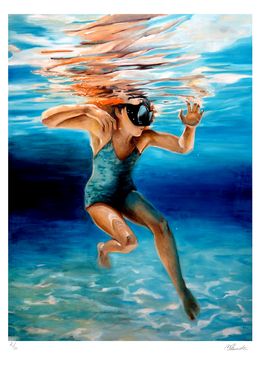




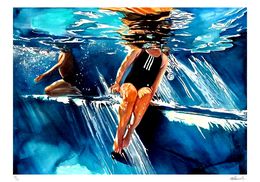


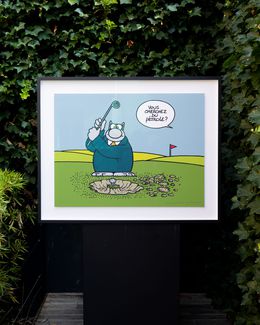
Discover the styles & movements
Discover the selection of our experts
Screen printing is a printing technique in which thick ink is applied to a surface using a stenciled design, a mesh screen and a tool called a squeegee.
Artists often opt for screen printing as a technique because compared to some other forms of printing, it allows for more opaque, long-lasting and vibrant colors. This is because of the thickness of the ink application.
Many artists that use screen printing to print onto textiles opt for cotton and cotton blends, as this type of fabric absorbs ink easily. Other materials used for screen printing include silk, wool and synthetic fabrics, although these materials each pose their own challenges when being printed on.




